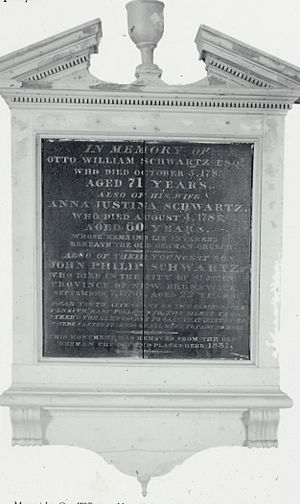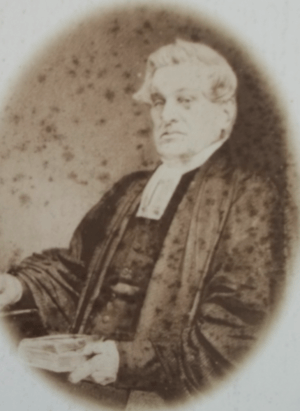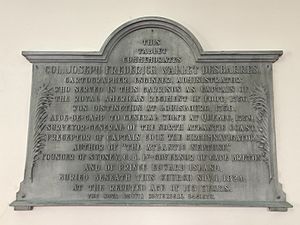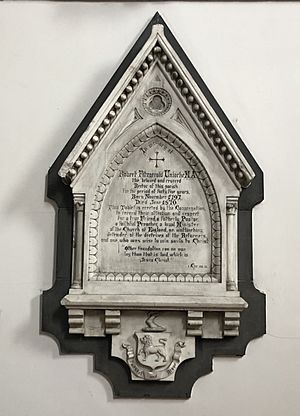St. George's (Round) Church (Halifax, Nova Scotia) facts for kids
Quick facts for kids St. George's (Round) Church |
|
|---|---|
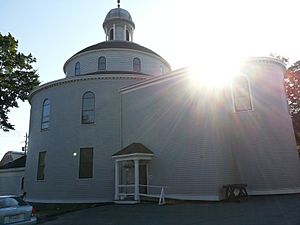
St George's Round Church, view from the Northwest
|
|
| 44°39′12″N 63°34′58″W / 44.6534°N 63.5829°W | |
| Location | Halifax, Nova Scotia |
| Country | Canada |
| Denomination | Anglican Church of Canada |
| Churchmanship | High church |
| Website | Official Website: https://roundchurch.ca/ |
| History | |
| Status | Parish church |
| Founded | 1756 (as the Little Dutch (Deutsch) Church) 1827 (as the Parish of St. George) |
| Dedication | Saint George |
| Architecture | |
| Functional status | Active |
| Style | Palladian |
| Groundbreaking | 1800 |
| Completed | 1812 (Original structure) 1827 (Addition of the apsidal chancel and entrance) 2000 (Restoration) |
| Specifications | |
| Materials | Wood |
| Administration | |
| Diocese | Nova Scotia and Prince Edward Island |
| Province | Canada |
St. George's Round Church is a special wooden church in Halifax, Nova Scotia. It's called "Round Church" because of its unique circular shape. This church was built in a style called Palladian, which is a classic design.
Building the church started in 1800. The British royal family helped a lot with money. We don't know who the main architect was. However, Prince Edward, Duke of Kent and Strathearn, who was Queen Victoria's father, was very involved in its design. The church is located in Downtown Halifax, at the corner of Brunswick and Cornwallis Streets. It became a National Historic Site of Canada in 1983. This was because of its connection to Halifax's early history and its special architecture.
Contents
The First Church: Little Dutch Church
The people who started the Round Church first met at a smaller church. It was called the Little Dutch (Deutsch) Church. This church was a few blocks north of the Round Church. It was founded by German Lutherans. They had moved to Halifax because Edward Cornwallis wanted them to help build the city. These "Foreign Protestants" began building the Little Dutch Church in 1756.
They used a house they got by trading lumber. They turned it into a simple, one-room church. The building was finished in 1758. A steeple and bell tower were added in 1760.
The church members were very poor. They really wanted a German Lutheran minister. Services were first held in German by regular church members. Even though the church was overseen by St. Paul's Church, it kept its Lutheran ways. In 1784, they finally got a German Lutheran minister, Bernard Michael Houseal.
Because they were so poor, they couldn't pay the minister alone. To keep him, they had to get help from the Society for the Propagation of the Gospel. This meant the church officially became Anglican. But it still kept some of its Lutheran traditions. About 40 years later, the church became too small. That's when work on the larger Round Church began.
Prince Edward's Design Ideas
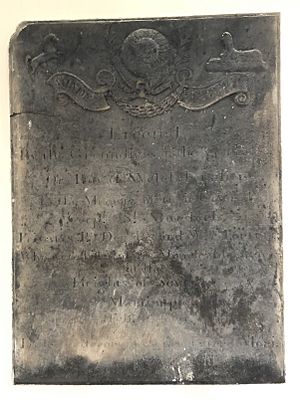
In the late 1700s, Halifax was a military town. It didn't have many beautiful public buildings. Prince Edward was in Halifax from 1794 to 1800. He wanted to change this. He led a building effort that included several important structures. These included the Prince’s Lodge, the Martello Tower, the Halifax Citadel Clock Tower, and St. George’s Round Church. All these buildings were inspired by the Palladian style.
Prince Edward, his older brother Frederick, and their father, George III, all supported the Round Church project. King George III gave a large donation of £200. Prince Edward also asked John Henry Fleiger, William Hughes, and John Merrick to help design a church in north Halifax in 1798-99.
The first service at the new church was held on July 19, 1801, by Rev. George Wright. Inside the church, there is a plaque. It remembers three crew members who died in the Invasion of Martinique (1809). St. George's stopped being completely round in 1827. That's when a new curved section and entrance were added. The entrance was later changed to be more square. This made it easier to get in, even if it changed the original Palladian look. There was talk of making the entrance round again during a restoration in the 1980s, but it didn't happen.
Early Money Problems
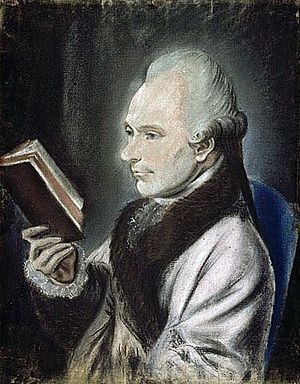
The church was expensive to build. The people who went to the church were not rich. They struggled to pay for it. Money came from private gifts, donations, and renting out church seats. However, some money was promised only if St. George's fully became an Anglican church.
The church members agreed to follow Anglican services and have an Anglican priest. But they didn't want to follow the Anglican Church's leaders. They worried the Anglican Church would take over St. George's. They wanted to keep their German rules for running the church. They also insisted that the church's property stay with its elders and wardens, not the diocese.
Bishop Charles Inglis did not help the Round Church. He redirected money and told people not to donate. He even suggested building another church nearby to make St. George's struggle more. In 1811, the church was in big financial trouble. They finally agreed to fully join the Church of England and follow the bishop. The only thing the mostly German members refused to give up was the church property. To this day, the property belongs to the Rector and Wardens.
Bishop Inglis was still not happy, even with these changes. He suggested to the Society for the Propagation of the Gospel (SPG) that St. George's should no longer be an Anglican church. Because of this, money promised by the SPG and the Governor's office was held back. Inglis then refused to give St. George's financial support. He even threatened to close the church.
However, Inglis's tough actions didn't work. Instead of giving in, the church members told him they didn't need his money. They said they would not sell their church. Even without a finished inside, they had enough money to fix the roof. They also changed some rules they had made earlier to please Inglis. For example, members of the Church of England could attend services. But only descendants of German Lutherans could vote on church matters.
Inglis's replacement, Bishop Robert Stanser, was willing to work with them. In 1819, St. George's finally received the money it had been promised. In return, it fully adopted Anglican services and organization. Under the leadership of Reverend Robert Fitzgerald Uniacke, St. George’s became its own independent parish in 1827.
Connection to the Titanic
Halifax was a key city for rescue efforts after the Titanic sank. One ship, the Minia, went to help. Its commander, Captain deCarteret, asked his own priest, Father Henry Ward Cunningham, to go along. Father Cunningham held memorial services at sea. As a thank you, he received a deck chair from the Titanic. He then gave it to the Maritime Museum of the Atlantic.
St. George's was also involved in the Titanic story. The funeral for the Unknown Child was held there. This child was later identified as Sidney Leslie Goodwin. Sidney Goodwin's grave was later moved to the Fairview Lawn Cemetery. Many other Titanic victims are buried there too.
Halifax Explosion Impact
St. George's is in Halifax's North End neighborhood. This area was very close to where the Halifax Explosion happened. Surprisingly, the church didn't get as much damage as expected. This might be because St. Patrick's Catholic Church across the street helped protect it.
The church lost its windows, doors, and a chimney fell. Its organ was also destroyed. It was replaced with a new one in 1912. St. George's was so well protected that its rectory (the priest's house) could shelter 22 people after the blast. The church hall had some damage. But overall, St. George's was lucky to survive. Sadly, 25 church members, including 7 young children, died in the explosion.
The Fire of 1994
On June 2, 1994, a fire started in the church basement. Children had found a way into the building. The fire spread up to the dome, causing it to collapse. About 30 percent of the church was destroyed.
Many people helped raise money for repairs. Prince Charles donated money. He had visited the church in 1983 with Diana, Princess of Wales. Later in 1994, Prince Philip visited St. George's. He was interested because of a fire at Windsor Castle two years earlier. The province's gift to Queen Elizabeth II and the Duke during that visit included a $1,000 donation for the restoration.
To avoid debt, the repairs took six years. Work happened in stages as money became available. The project was finished in 2000. It cost $4.6 million, which was actually under budget.
St. George's YouthNet Program
St. George's YouthNet is a program for young people in the city. It helps kids learn important life skills and connects them with mentors. It is run by St. George's Church and is based there. YouthNet offers lunch and after-school programs. It also runs summer camps for kids of all ages, from toddlers to teenagers.
Some successful projects by YouthNet include the Moving Images Project. There's also a Teen Program supported by the Rotary Club and the IWK. It's called "Healthy Teens Building Vibrant Communities." An art program led by local artist Emma Fitzgerald is also part of their work.
See also
- List of oldest buildings in Canada
- List of oldest buildings and structures in Halifax, Nova Scotia


